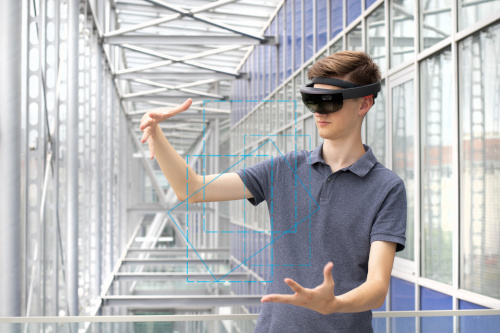
Imagine you are a struggling reader. You dread reading…in any class. You feel like a failure, and you are starting to hate school. One day, your science teacher brings in a Microsoft HoloLens headset. You put on the mixed reality glasses and pick up the science article that the teacher wants you to read. You begrudgingly begin reading.
After only a few sentences you are lost because you don’t know what “light energy” means. Because your eyes stopped on that phrase, an animation jumps off the page through the glasses demonstrating an example of the concept with a voiceover explanation. Several moments later you read the word “photosynthesis” and another animation appears with an audio explanation. Suddenly, reading in science class takes on a whole new emotion…you are feeling success and are even interested in reading more about science.
Characteristics of struggling readers
Some students struggle with reading, and it’s a complicated situation. First, they struggle with anxiety. High anxiety is often present for struggling readers, and they tend to have reading anxiety along with general anxiety. Second, low-proficiency readers struggle with motivation. Essentially, struggling readers have a low reading self-concept, which is linked to lower motivation. Third, struggling readers have low achievement. Given the high anxiety and low motivation, struggling readers only perform at a low reading level. For these struggling readers, common instructional methods are insufficient…and they fall behind.
Mixed reality science reading
At East Carolina University, we wanted to create something uncommon, so we created a science reading experience for 5th grade students using the Microsoft HoloLens. The HoloLens is a mixed reality technology—it merges the real and virtual worlds to produce something entirely new. Young readers wore the mixed reality glasses and then looked at a page of scientific text in the real world. But we programmed the HoloLens to deliver supplementary content in the virtual world that could only be seen and heard within the glasses. Because abstract concepts can be intimidating for young learners, we focused on supplying additional information for difficult scientific concepts. When the students’ eyes paused on a particularly difficult word or phrase, the glasses would deliver audio-visual information to supplement the reading.

